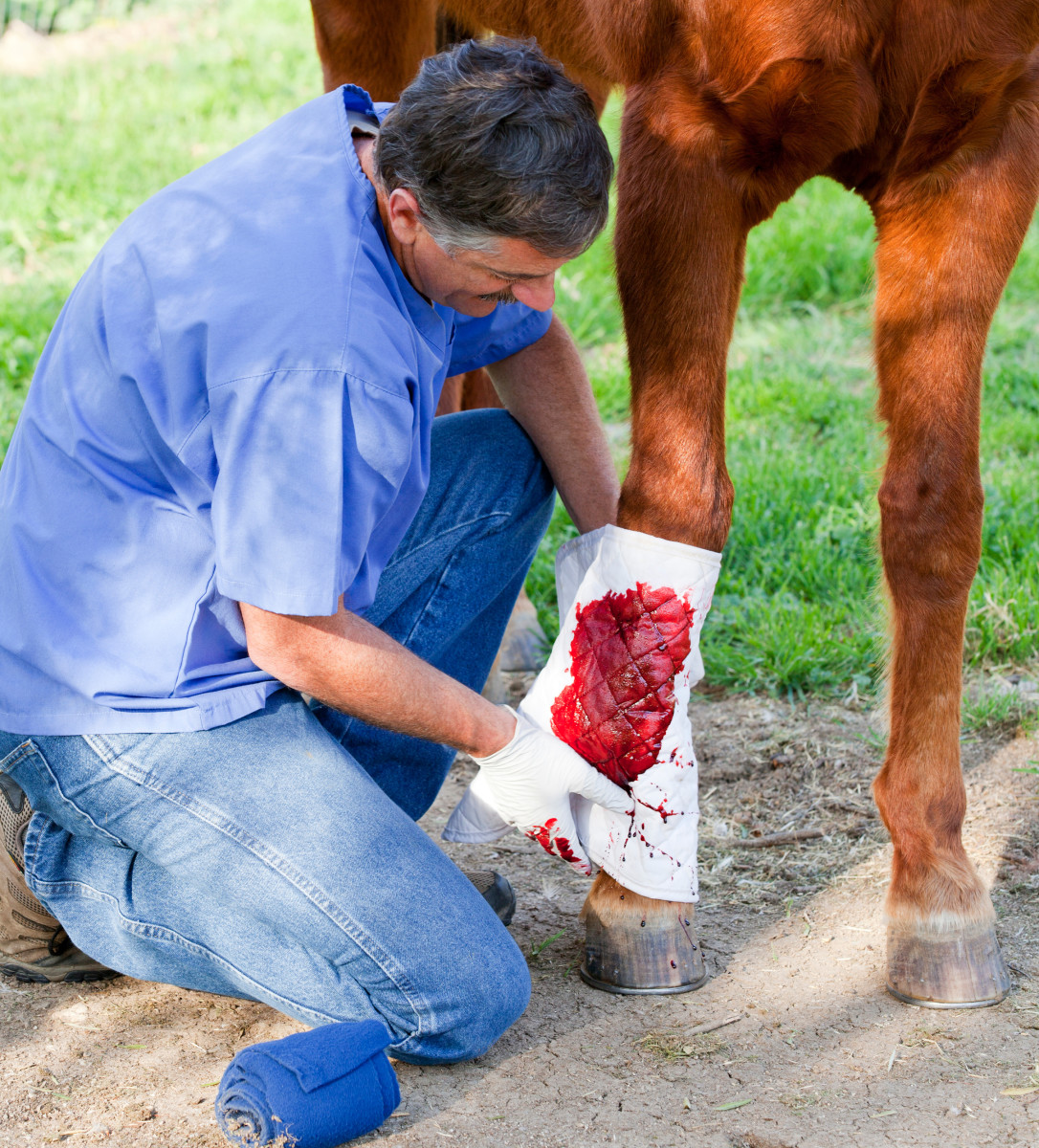
At the North American Veterinary Conference (January 2016) and at the February 2017 Colorado State University SCAAEP symposium, Dean Hendrickson, DVM, MS, DACVS, of Colorado State University’s Veterinary Teaching Hospital, reviewed basic principles of wound care, along with some more novel approaches.
It is clear that removal of hair is important to minimize bacterial colonization and wound contamination while enabling good visualization of the injury. Hendrickson suggested filling the wound with sterile K-Y Jelly prior to clipping to prevent hair from entering the wound.
He proposed scrubbing with sterile saline without antiseptics as the least cytotoxic approach to cleansing, except in cases of exceptional contamination and presence of debris.
On the topic of avoiding antiseptics in wounds, Hendrickson stated, “The focus should be on reducing bacterial numbers by reducing the volume of necrotic tissue and foreign debris.” He referred to a sobering study (Tatnall et al., ) that identified that 100% of cells exposed for 15 minutes to recommended antiseptics (such as chlorhexidine) were dead within 24 hours.
Hendrickson particularly likes surfactant-based wound cleansers (those with scrubbing bubbles, such as polysorbate 20 or pluronic F-68) because they reduce surface tension on wound exudate. That enables easier removal without the need for aggressive scrubbing that adds further trauma to the wound site.
The objective is to interfere as little as possible with fibroblasts and epithelial cells necessary to the healing process. Sound advice is to only use substances in a wound that you’d be willing to put in an eye. While that tenet should be kept in mind, Hendrickson suggested a few less-commonly used treatments that are relatively irritating to tissues, but that have beneficial effects.
Besides sterile physiologic saline, another method for debridement and reduction of bacterial numbers is to use hypertonic (20%) saline. Due to its irritating potential, it should only be used to debride a wound, then discontinued—or, at most, only occasionally applied to a wound surface via a spray bottle to reduce bacterial numbers.
Vinegar (acetic acid) has been shown to be effective at reducing numbers of Pseudomonas aeruginosa in burn wounds as well as Staphylococcus aureus and gram-negative rods in human venous leg ulcers. Soaking an equine wound or covering it with a compress of a 0.25-0.5% vinegar solution for 15 minutes/day can reduce bacterial numbers due to the effects of the acidic pH.
Removal of necrotic tissue is important for eliminating bacterial contamination. Because it is cytotoxic, hydrogen peroxide is not recommended for wound care other than in cases that need aggressive debridement of necrotic tissue. Autolytic debridement occurs via enzymes normally present in wound fluid and white blood cells.
The use of gauze or pressure lavage also mechanically debrides, but it is traumatic to remaining tissue. Enzymes such as collagenase and trypsin are useful, but they are expensive. The least tissue-toxic strategy is to use sharp instruments to cut away necrotic and devitalized tissue.








